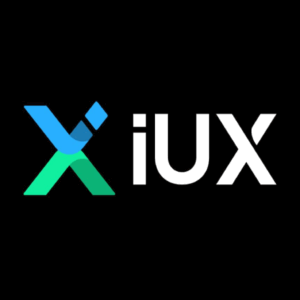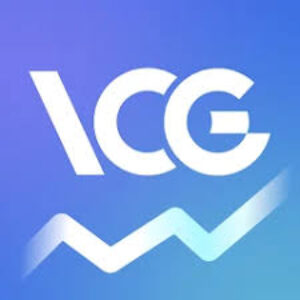
Forex backtesting has become an indispensable tool in the trader’s arsenal—an analytical compass that reveals whether a trading strategy is robust or fundamentally flawed. As algorithmic trading, historical data analysis, and advanced modeling tools become increasingly accessible, understanding how to conduct effective backtesting can mark the line between strategic foresight and costly trial-and-error.
But what is backtesting in forex, exactly? In essence, it is the process of applying a trading strategy to historical data to see how it would have performed in the past. Although it cannot predict the future with perfect accuracy, it gives critical insights into risk exposure, expected returns, and weaknesses in logic.
Industry expert Alex Hargrave once remarked, “Backtesting is where theories meet reality. It disciplines traders to validate ambition with data.” With that in mind, here are five tried-and-true backtesting strategies, each with its own nuances, benefits, and tools for forex traders to consider.
| Strategy | Description | Benefits | Limitations | Ideal For |
|---|---|---|---|---|
| 1. Manual Backtesting | Scrolling through historical charts and visually applying trading strategies step-by-step to see past performance |
• Hands-on familiarity with market structure • No sophisticated software needed • Builds intuitive understanding |
• Time-consuming • Susceptible to hindsight bias • Limited sample size |
Discretionary traders and beginners learning price action |
| 2. Spreadsheet-Based | Using Excel or Google Sheets with formulas to simulate entries, exits, and performance metrics for rule-based strategies |
• Structured logical approach • Quantifiable results • No programming required |
• Manual data input • Less suitable for complex strategies • Limited visualization |
Traders with technical indicator knowledge and quantitative approaches |
| 3. Automated Software | Using dedicated platforms like MetaTrader, Forex Tester, or TradingView to run thousands of simulated trades |
• Efficient and scalable • Incorporates market factors (slippage, spread) • Detailed performance metrics |
• Learning curve for some platforms • Potential cost for premium software • Still depends on historical data quality |
Traders of all experience levels seeking comprehensive analysis |
| 4. Walk-Forward Testing | Splitting data into training and testing sets to mimic live trading conditions and prevent overfitting |
• Detects curve fitting issues • Better reflects changing market conditions • More realistic performance expectations |
• Requires more data • More complex methodology • Less intuitive results |
Experienced traders concerned with strategy robustness across market cycles |
| 5. Monte Carlo Simulations | Advanced statistical method testing strategies under thousands of random market sequences to reveal risk profiles |
• Evaluates robustness beyond historical sequencing • Shows confidence intervals • Highlights tail risks |
• Advanced statistical knowledge needed • Specialized software required • Complex interpretation |
Professional traders, hedge funds, and institutional desks analyzing risk |
5 Best Forex Backtesting Strategies
1. Manual Backtesting Using Historical Charts
Manual backtesting may appear rudimentary, yet it fosters a deep, intuitive understanding of price behavior. In this method, a trader scrolls back through historical forex charts and visually applies a trading strategy—step-by-step—to see how it would have played out.
Example Use Case:
A trader testing a moving average crossover strategy might scroll back to 2020 EUR/USD price data and track where the short-term MA crossed the long-term MA, noting the hypothetical entries, exits, and profit or loss.
Benefits:
- Encourages hands-on familiarity with market structure
- No need for sophisticated software
- Ideal for discretionary traders
However, the downside lies in its time-consuming nature and susceptibility to hindsight bias. Despite this, it remains a foundational exercise for many professional traders.
2. Spreadsheet-Based Backtesting for Rule-Based Strategies
For those who prefer structured logic over screen time, spreadsheets like Microsoft Excel or Google Sheets can serve as a powerful tool for testing rule-based strategies.
How It Works:
Traders input historical price data and use formulas to simulate entries, exits, stop-loss triggers, and performance metrics. This approach works best for strategies with clear, quantifiable rules—such as RSI thresholds or Bollinger Band breakouts.
Expert Insight:
According to David Zhang, a quant analyst and trading systems developer, “Even with all the modern tools, Excel remains surprisingly flexible for prototyping and verifying trading systems. It forces clarity in logic.”
Best for:
- Traders who understand technical indicators
- Quantitative testing with numeric thresholds
- Simple automation without programming
3. Automated Backtesting via Forex Backtesting Software
Among the most efficient and scalable methods is automated backtesting using dedicated forex backtesting software. This includes platforms like MetaTrader’s Strategy Tester, Forex Tester, and TradingView’s Pine Script environment.
| Software | Key Features | Ideal For |
|---|---|---|
| MetaTrader 5 | Built-in tester, tick data, optimization | MT5 users |
| Forex Tester 5 | Manual + automated simulation, realistic spread testing | Beginners to pros |
| TradingView | Pine Script custom strategies, cloud access | Script-savvy traders |
These tools allow traders to simulate thousands of trades in minutes, incorporating factors like slippage, spread, and stop hunting. They also provide performance metrics like Sharpe Ratio, drawdown, and expectancy, which are crucial for evaluating strategy risk.
4. Walk-Forward Testing to Avoid Overfitting
One of the most overlooked techniques in forex backtesting is walk-forward testing—a methodology that mimics live trading conditions by splitting data into training and testing sets.
Here’s how it works:
- Optimize the strategy on a specific time frame (e.g., 2018–2019)
- Test it on the following out-of-sample data (e.g., 2020)
- Repeat the process across rolling periods
This process helps detect curve fitting—when a strategy performs well on past data but fails in real time.
Why It Matters:
It reflects how strategies will adapt to shifting volatility, unexpected events, and changes in market sentiment. Without it, a strategy may appear excellent on paper but fail under pressure.
5. Monte Carlo Simulations for Risk Analysis
Last but not least, Monte Carlo simulation is an advanced statistical method that tests how a strategy would perform under thousands of random market sequences. It scrambles the order of trades or market data to simulate alternate realities and stress scenarios.
Imagine this:
A strategy has a 60% win rate and averages 50 trades per month. By reshuffling the order of trades 10,000 times, Monte Carlo analysis can show worst-case, average, and best-case drawdowns.
Advantages:
- Evaluates robustness beyond historical sequencing
- Measures statistical confidence intervals
- Highlights tail risks and capital requirements
Though less common among beginners, it is widely used in hedge funds and institutional trading desks to complement traditional forex backtesting results.
The Best Forex Backtesting Software: A Quick Overview
To wrap up, here’s a quick table comparing some of the best forex backtesting software options available today:
| Platform | Price | Strengths | Limitations |
|---|---|---|---|
| Forex Tester 5 | Paid | Realistic simulation, friendly UI | Limited scripting flexibility |
| MetaTrader 5 | Free | Popular, community-supported | Can be complex to set up |
| TradingView | Freemium | Visual, cloud-based | Strategy coding required |
| QuantConnect | Free (open) | Institutional-grade, powerful APIs | Steep learning curve |
Each of these tools has its place. The key is to align the platform’s capabilities with the strategy’s complexity and the trader’s technical skills.
Final Reflections
Ultimately, forex backtesting is not merely a task—it is a mindset. A thorough, iterative process of refining strategies, spotting weaknesses, and gaining statistical confidence. Yet, it is also easy to fall into the trap of “over-testing” without moving to live trading or demo environments.
There is another thing to consider. No matter how rigorous the backtest, market dynamics evolve. Liquidity, spreads, news catalysts, and retail behavior shift over time. Backtesting is a flashlight, not a crystal ball.
To echo the wisdom of Marina Vasiliev, an ex-prop trader and systems designer, “A backtest is a conversation with the past. Trading is a dialogue with the present.”

















